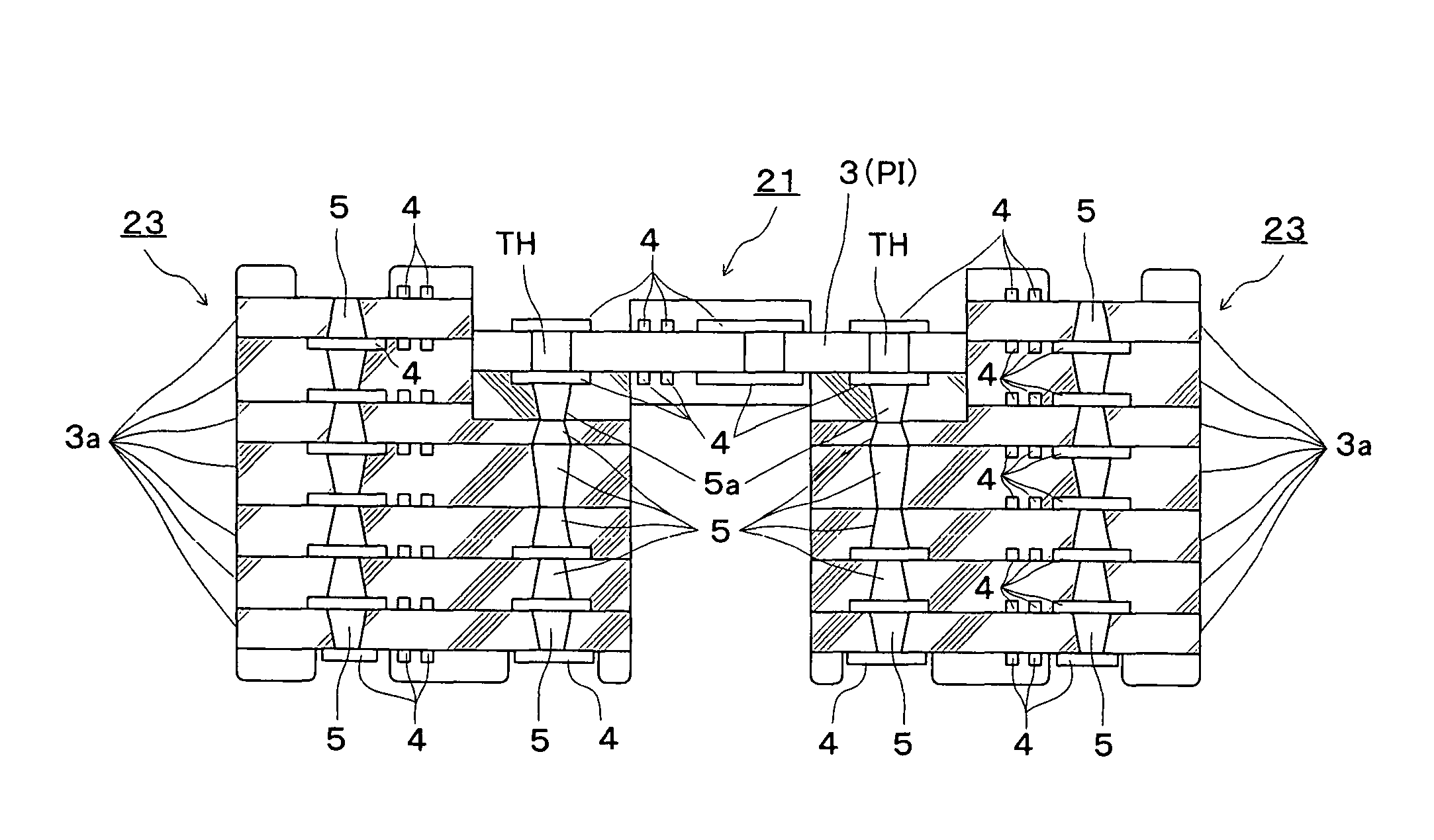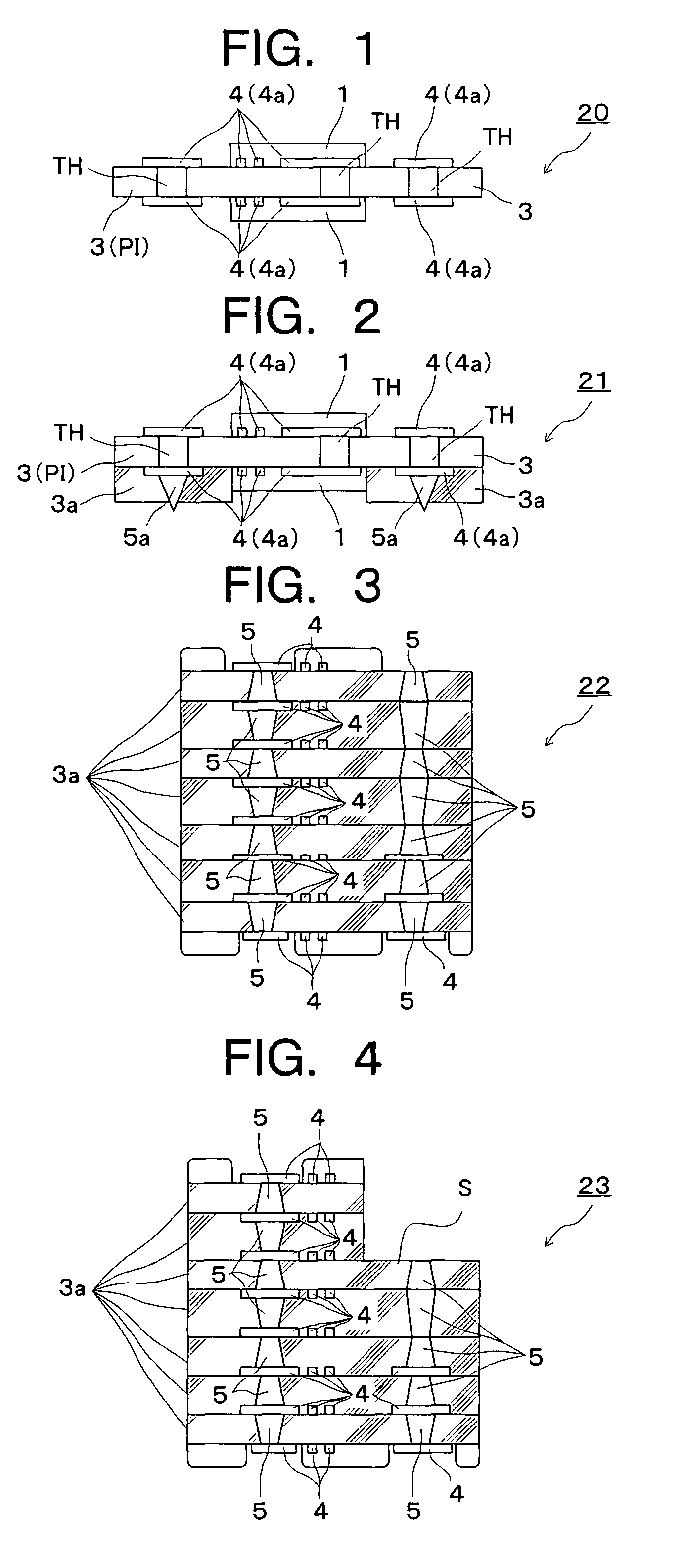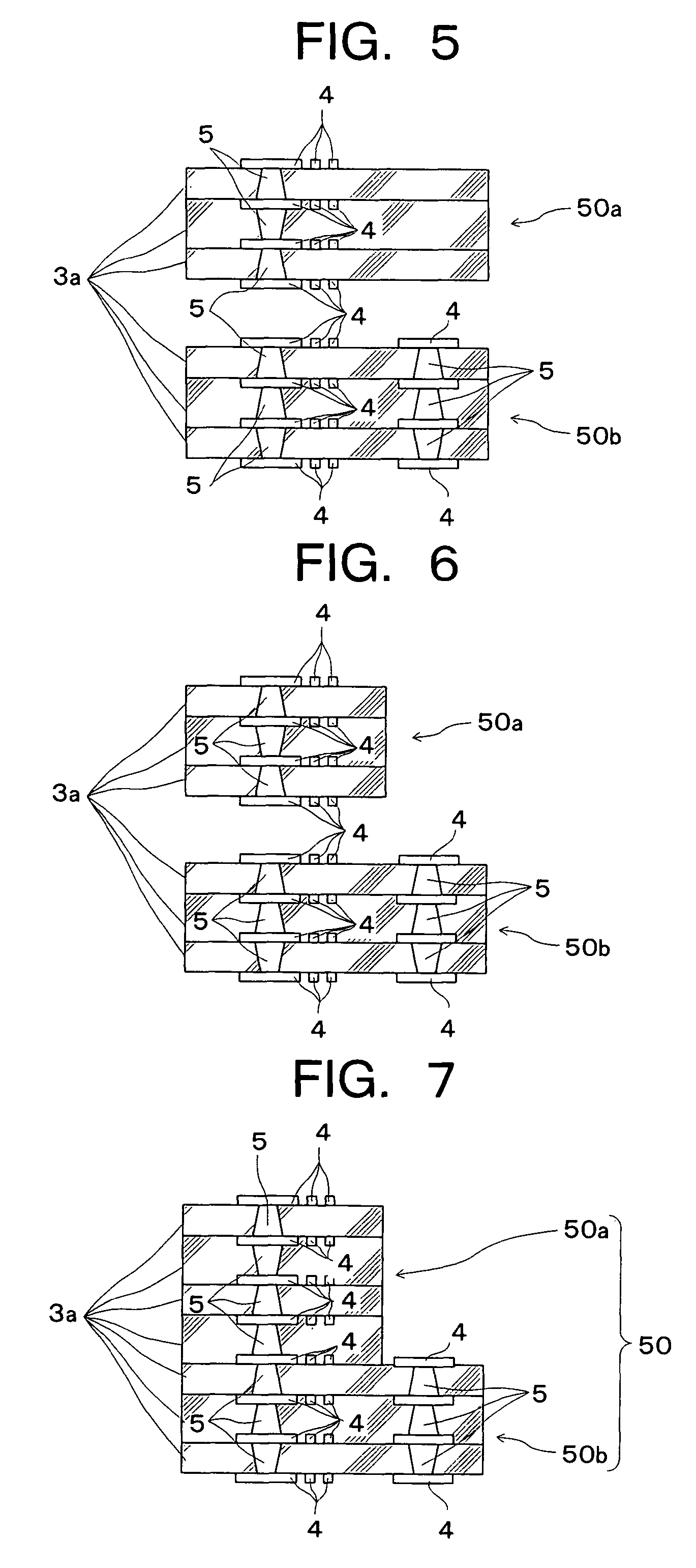Rigid-flexible board and method for manufacturing the same
a rigid-flexible board and manufacturing method technology, applied in the direction of printed circuit manufacturing, printed circuit aspects, chemistry apparatus and processes, etc., can solve the problems of many processes, deterioration of the yield ratio of the board, and inability to obtain high productive yield, etc., to achieve low deformation, reduce the size variation, and simplify the manufacturing process of the rigid-flexible board
- Summary
- Abstract
- Description
- Claims
- Application Information
AI Technical Summary
Benefits of technology
Problems solved by technology
Method used
Image
Examples
Embodiment Construction
[0054]An embodiment according to the present invention will be described with reference to the FIGS. 1-16. In this case, the same references are imparted to like components through FIGS. 1-16 and 17-23 so that the explanation for like components will be omitted.
(Formation of Flexible Board)
[0055]First of all, electrolytic copper foils 4a with a thickness of 18 μm are applied on the both main surfaces of the polyimide film 3(PI) with a thickness of 25 μm to form a flexible board with copper foils on both of the main surfaces wherein through holes (TH) are formed at predetermined positions of the board.
[0056]Then, a normal resist ink for etching (trade name: PSR-4000H made by Taiyo Ink Mfg Co., Ltd) is screen-printed on the electrolytic copper foils 4a of the flexible board. After the conductive patterned area is masked with resist, the electrolytic copper foils 4a are etched with an etching solution of copper chloride, and the resist mask is removed so as to form a two-sided flexible...
PUM
| Property | Measurement | Unit |
|---|---|---|
| height | aaaaa | aaaaa |
| thickness | aaaaa | aaaaa |
| thickness | aaaaa | aaaaa |
Abstract
Description
Claims
Application Information
 Login to View More
Login to View More - R&D
- Intellectual Property
- Life Sciences
- Materials
- Tech Scout
- Unparalleled Data Quality
- Higher Quality Content
- 60% Fewer Hallucinations
Browse by: Latest US Patents, China's latest patents, Technical Efficacy Thesaurus, Application Domain, Technology Topic, Popular Technical Reports.
© 2025 PatSnap. All rights reserved.Legal|Privacy policy|Modern Slavery Act Transparency Statement|Sitemap|About US| Contact US: help@patsnap.com



